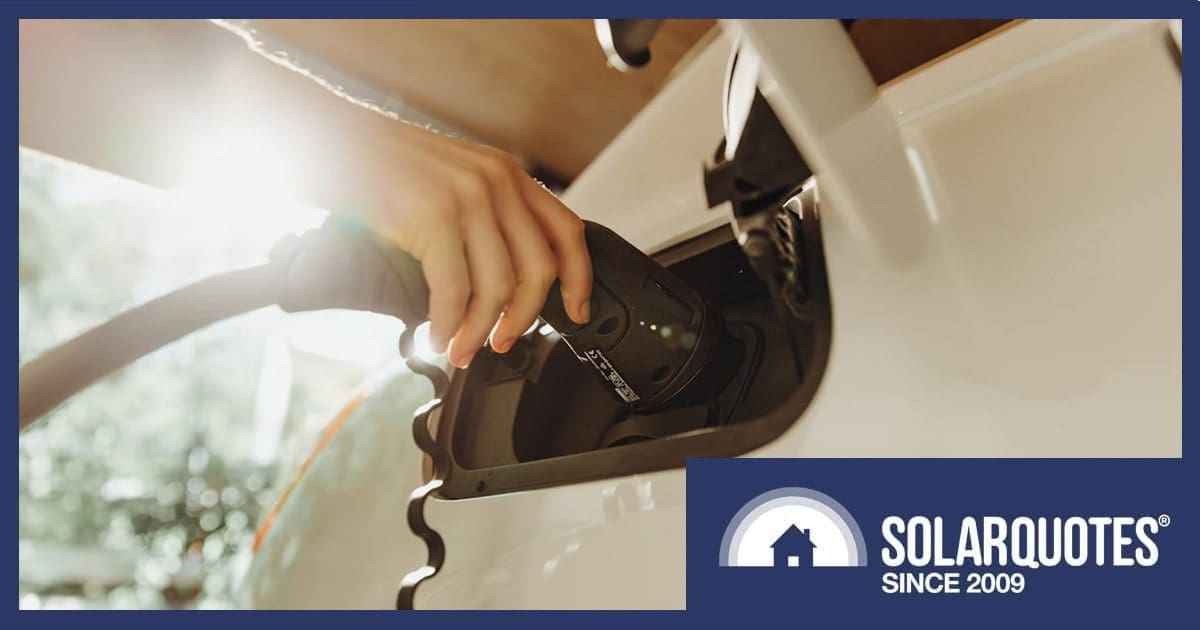
A report commissioned by Energy Consumers Australia (ECA) makes initial recommendations for creating affordable public electric vehicle charging that’s accessible to all — and ECA is looking for feedback.
Public EV charging availability in Australia has come a long way in the last few years. If you check out the public EV charger map on SolarQuotes, stations have popped up everywhere and there are a bunch more on the horizon. An example is the New South Wales government announcing last month another 549 kerbside EV chargers will be installed across Wollongong, Greater Sydney and Newcastle over next year.
But it can be a case of feast or famine, and even where it’s a feast there can be issues.
ECA commissioned economic consultancy HoustonKemp to prepare a report to identify public charging challenges, and solutions for Australia that would best promote consumer interests based on ECA’s vision of:
- Ensuring affordability of EV charging through minimising network upgrade costs of meeting increased load, costs of implementation, and end-user pricing.
- Providing availability of public EV charging infrastructure.
- Promoting a positive user experience.
Fragmented Infrastructure Not Keeping Up
According to HoustonKemp, public charging points in Australia increased 121 per cent from approximately 3,650 in 2022 to 8,100 in 2025; but EV registrations surged by 675 per cent over the same period.
The firm notes Australia is now at the lower end of public charging points per EV compared to mature international markets, having one per 37 EVs in 2025; whereas in 2022 it was one per 11.6 EVs. Just as a comparison, in South Korea it’s reportedly one per 1.8 electric vehicles, which seems over the top but places the country well for further and significant EV uptake.
However, the firm also says there is no definitive optimal ratio — it depends of factors such as local electricity grid capacity, the mix of AC and DC public charging infrastructure, adoption rates and home charging availability.
How we stack up on home EV charging isn’t clear, but not everyone can install a hard-wired home EV charger. And for some EV owners, the ‘granny’ or ‘brick’ chargers that plug into a standard power outlet just isn’t enough. There are also the many Australians in regional areas, renters, those without off-street parking and apartment dwellers to consider.
(Some Of The) Recommendations
HoustonKemp says international experience demonstrates a ‘fragmented’ EV charging infrastructure market — such as that in Australia — where networks are not interoperable and have been developed with a lack of centralised planning is not in the best interest of consumers.
Among the recommendations it makes to help turn this around:
- Mandating interoperability between public AC EV charging infrastructure.
- Implementing a uniform set of accessibility standards, either customised for public EV charging infrastructure or in line with general accessibility standards.
- Implementing a set of payment accessibility standards for AC and DC charging infrastructure.
- Introducing reliability standards for EV charging infrastructure, including for both uptime and electricity throughput.
In terms of roles and responsibilities:
- Making network capacity information publicly available, which will require co-operation from Distributed Network Service Providers (DNSPs), along with a map of suitable poles on electricity networks for hosting public EV charging infrastructure.
- Expedited application approvals on fair terms.
- A standard set of guidelines developed to assist local governments in assessing where chargers can go.
- Charging infrastructure owners should determine the quantity, specification and location of commercial public EV charging infrastructure as they are taking the investment risk.
- Provision for non-commercial delivery of infrastructure should not be at the expense of commercial market development, with state and territory governments best placed for non-commercial delivery decisions.
- Allowing DNSPs to provide public EV charging infrastructure in non-commercial locations; but subject to participating in a competitive tender ensuring the infrastructure is delivered at least cost.
- Network capacity planning and pricing needs to account for the substantially higher strain of DC charging on electricity networks.
The above barely scratches the surface of what’s in the report and solutions proposed. Among various other topics, it also delves into changes to the National Electricity Rules that will be necessary and looks at the issue of local government and DNSP charges for land and electric pole access.
ECA is welcoming feedback on the challenges identified in the report and the potential solutions proposed via a survey that’s open until 4 September 2025.
On a related note, discover everything you need to know about using public EV charging stations in Australia.

 RSS - Posts
RSS - Posts



I see several issues with EV charging at the moment (I am talking about public chargers, not home charging).
1. Multiple apps required to use all available chargers which is useless if there is no signal. It is also a disincentive for older people or those with a disability.
2. The combination of apps, charging systems and payment systems amount to a massive data vacuum.
3. Public chargers are often in out of the way places, often isolated, no security, no shelter and no facilities. And unreliable. This is a disincentive for the elderly and females. Anecdotally drivers in these groups say that it is a reason that they have not switched to an EV.
=> Legislate all new or refurbished servos must have at least 1 charger installed – with prices shown on signs. They must be under cover, be universal in operation and have payment options at the counter with cash or credit card. This keeps servos in business during the shift to EVs. Curbside public chargers must also take credit & debit cards.